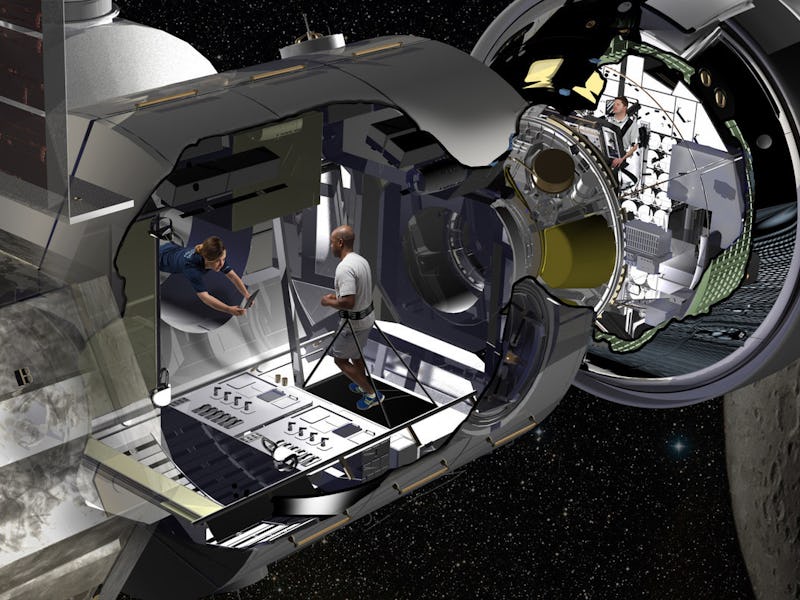Lockheed Martin is Building a Deep-Space Habitat Out of an Old ISS Part
The prototype is all part of a larger goal to make deep space architecture more sustainable.

NASA gave the green light to aerospace company Lockheed Martin to refurbish an old International Space Station cargo container as a prototype for a deep space habitat, the agency has announced. Lockheed Martin’s goal is to help develop life-support systems that can protect astronauts as they travel beyond low-Earth orbit.
The International Space Station won’t be around forever. Exactly what to do about its future, however, is an entirely different question. Companies like Lockheed Martin have pitched ideas about essentially cannibalizing the old parts of the ISS to turn into future spacecraft. Such a scheme could save huge amounts of energy, money, and resources that would otherwise go into launching heavy equipment into space.
Working with NASA’s NextSTEP program, Lockheed Martin will next work to turn the old ISS cargo module into the prototype of a full-scale habitat at NASA’s Kennedy Space Center, the aerospace company announced last week. This is part of a larger effort by Lockheed Martin to work with NASA on refining the design of the Deep Space Gateway — the agency’s fabled key to sending future astronauts to Mars.
“We are excited to work with NASA to repurpose a historic piece of flight hardware, originally designed for low Earth orbit exploration, to play a role in humanity’s push into deep space,” Bill Pratt, Lockheed Martin’s NextSTEP program manager, said in a statement. “Making use of existing capabilities will be a guiding philosophy for Lockheed Martin to minimize development time and meet NASA’s affordability goals.”
NASA also recently inked a deal with NanoRacks to develop a new type of space station through used rocket boosters, which could lead to a “plug-and-play” version of space infrastructure.
For its part, Lockheed Martin is interested in how its own design can work their way into the Deep Space Gateway. The company wants to work with NASA on developing architecture necessary for travel to Mars and beyond. If this prototype is successful, the company could conceivably develop more ideas on how to turn other ISS parts into Mars-specific spacecraft.